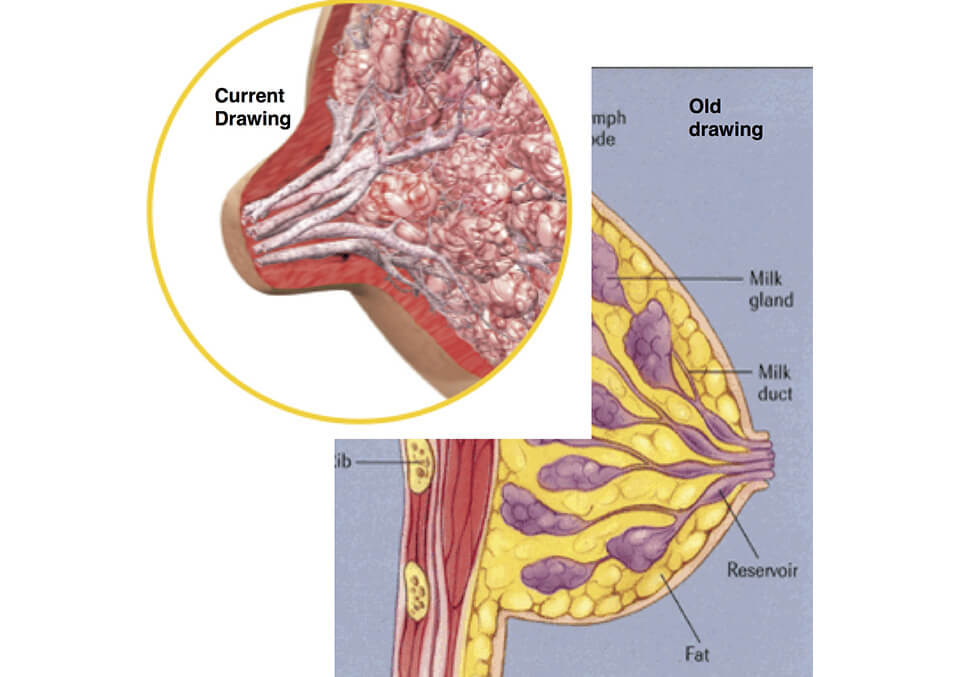During your pregnancy, breasts change size and shape, and you breastfeed. Many women can undergo these changes marginally and others drastically. Hormones, genetics, and weight growth are only a few of the factors that determine how widespread your breasts are. But it usually isn’t a concern, even if your breasts do not appear to change much. Women of all breast forms and sizes can successfully breastfeed their babies.
Upon your child’s birth, your breasts can grow even more significant. Your milk supply will rise in the first few weeks after portion, and swelling and breast encumberment are typically occurring. In a couple of days, too much swelling and discomfort will heal, but only if you breastfeeding, you will have breast milk for your baby to hold on the smaller side of your breast.
How breast size affects breastfeeding?

Women come in various shapes and sizes, and breasts are like that. Breasts are full, thin, triangular, oval, long, short, symmetrical. All these breast styles are common.
The dimensions of your breasts are based on the number of fatty tissue in them. Smaller breasts have less fatty tissue, while more massive breasts are fattier. Yet, the adipose tissue is not collecting breast milk. Your breasts also contain glandular tissue, which is what breast milk produces. Contrary to fat, your breasts do not need to be related to the amount of milking tissue.
Most women can breastfeed in any size and form they have. There are, however, several common concerns and real breast problems that might interfere with breastfeeding.
Talk to your physician while you are pregnant and have a breast examination. Your doctor can answer your problems and help to alleviate your fears. You will meet with your doctor after your baby is born to help with any issues you have found.
Concerns on how breast size affects breastfeeding

Here are the most common issues related to breast-size and form breastfeeding.
- “Hypoplastic Breasts”
Hypoplastic breasts can prevent breastfeeding is only a small percentage of women. Hypoplastic breasts are often spaced wide and very thin, or long and tubular in shape.
The areola can be quite large with uneven breasts. Females with hypoplastic breasts have underdeveloped glandular breast tissue (milk production) and may not provide complete breast milk supply.
- “Tiny Breasts”
Women with small breasts often worry about not being able to make their baby enough milk. Unless the size of the small chest is related to hypoplastic breasts, no problem should occur.
Although you may need to breastfeed more often because of the amount of breast milk your little ones can carry, you can produce enough milk for your infant even successfully.
- “Large Breasts”
Wide-breasted breastfeeding can be painful. It can be hard to concentrate on the baby, and you can think about your breasts covering the baby’s face. A comfortable position is necessary, and support should be received right from the start.
- “Breast Implants”
Most women with breast implants will safely breastfeed. Everything depends on how the operation was done.
Consult the operation with your doctor and surgeon. If you have not compromised the area near nipple and areola, the odds of breastfeeding will be much better.
- “Breast Reduction”
Breast reduction procedures are more likely to interfere with lactation. Breast tissue removal, together with breast reshaping, may damage the glandular tissue, nerves, and milk ducts.
You need to monitor the amounts of milk carefully you will obtain if you have had a drop in your breast. You have a good chance of having your infant substitute.
- “Other Breast or Chest Surgeries”
Whenever the skin is cut around the breast, it can affect breastfeeding. During surgery, nerves, and milk-producing breast tissue, particularly around the nipple and areola, can also be affected.
The truth: how breast size affects breastfeeding

Breast size sometimes reflects the amount of milk that can be stored between food in your breasts. It is regarded as room for space. The ability to save the daughters and also the breasts of the same woman may be very different.
Mothers may provide plenty of milking for their baby with either large or small storage capacity, but their babies can eat very differently. For example, a baby whose mother has a higher storage capacity may spend more time between breastfeeding without reducing its mother’s supply of milk. Whereas a mother who is larger is overflowing with breasts sooner, she will have to breastfeed her baby more often to sustain her milk supply (having her breasts drained adequately), and to meet the needs of her infant.
Only claim that every 24 hours, the baby needs the breast milk equivalent. You’d also have to feed your baby more relative to a mom that has a’ beer bottle’ storage capacity if you have a shot glass’ storage capacity. It is because it takes a lot more weapons than beer glass to fill a container.
Upon weaning, it could take your breasts six months or longer to get back to their pregnancy. They could never be precisely the same, though. Your chest may remain larger or become smaller and softer after all the improvements in pregnancy and breastfeeding. You might have stretch marks, or you could look weak. All of these modifications will occur naturally.
If you have concerns about your breast dimensions, forms, or changes during pregnancy, breastfeeding, and weaning, see your doctor. Click here for more information. Your doctor will check your breasts and answer all your questions.
Conclusion
Due to various sizes of breastmilk and different mothers ‘ storage capacities, it’s essential to feed your baby when it comes to the baby’s food. It ensures that your kid eats when he shows signs. You can thus help to ensure that your baby absorbs as much food as it wants.
A mother’s capacity to make milk is affected by her breast, and not by breast size by the amount of glandular tissue. There can be plenty of glandular tissue for even mothers with small breasts. The bigger the chest, the fattier the fabric (unlike glandular tissue) generally is in the breast.
All of these changes help prepare to breastfeed for your breasts. Not every mother observes all of the above improvements, and this does not usually mean that problems occur. I hope you can now rest knowing you can make plenty of milk for your baby or babies regardless of breast size.
Read also:
- Fasting: Is it Advisable During Pregnancy?
- Breast Milk: when does a Pregnant Woman Have it?
- What Happens When You Get Your Period While Breastfeeding


